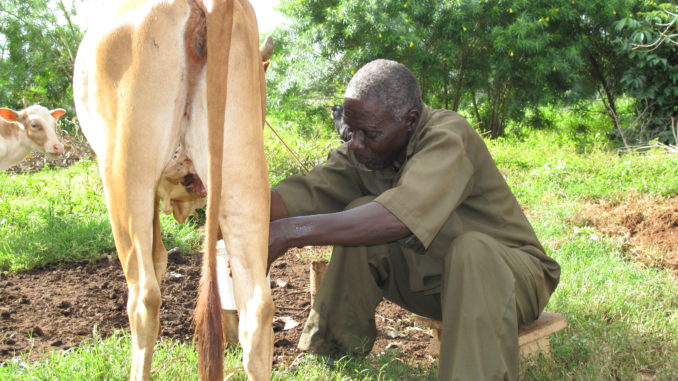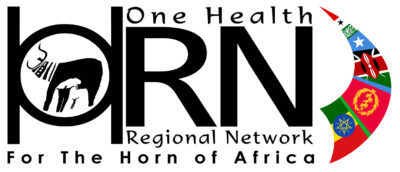
Milk Quality, Animal Husbandry and Childhood Morbidity in Pastoral Systems, Kenya
by Maryanne Usagi, Jeff Wamiti, Grace Watene and Linnet Mwangi
In the Horn of Africa, a predominantly pastoral livestock production region, there is anecdotal evidence for high prevalence of resistance in bacteria to commonly used antibiotics among livestock and humans. Drivers for this are likely to include poor usage patterns in both human medicine and veterinary practices that create a unique challenge for the developing world. Poor animal husbandry practices and a dependency on antibiotics to manage disease can lead to animal food products including milk containing potential food borne pathogens, such as Staphylococcus aureus and Escherichia coli that are likely to be drug resistant. Furthermore, a lack of awareness of withdrawal periods for antibiotics and their importance can also mean that drug residues are present in milk. Therefore, if consumed, contaminated milk can negatively impact on the health and nutrition status of humans especially children under the age of five years and the elderly.
The high use of antibiotics in livestock can also contribute to antimicrobial resistance (AMR) of bacteria associated with mastitis. Mastitis (clinical and sub-clinical), characterised by inflammation of the mammary glands, is a major cause of antibiotic use in the dairy industry in Sub-Saharan Africa. The disease causes significant reduction in milk yield and results in economic loss related to medication (use of antibiotics), microbiological diagnostics and additional management inputs including culling and replacement of the infected animals.
Contamination and spoilage of milk may also impose a significant economic burden to pastoral communities reliant on milk production for income generation since the milk could be rejected by buyers. This results in its disposal and subsequent milk post-harvest losses which amount to approximately USD 200,000,000 annually in the region. There is therefore a need for a study to determine the factors that contribute to milk contamination and AMR for the improved well-being of both livestock and humans. It is suspected that smallholder dairy pastoral systems predispose milk to contamination with drug residues and food borne pathogens through milk handling practices and use of veterinary drugs.
It is against this backdrop and following funding from The One Health Regional Network for the Horn of Africa (HORN) project that a diverse team of researchers from the Horn of Africa will conduct research on the association between antibiotic use, mastitis, milk quality, animal husbandry and explore the impact on childhood morbidity in pastoral systems, Kenya. The study will determine the levels of antibiotic residues in milk and the antibiotic susceptibility of bacteria cultured from milk to commonly used antimicrobials in animals. In addition, the study will map the antimicrobial usage patterns and identify risk factors, including husbandry practices that lead to milk contamination and the results will be inform best practice recommendations. The study will also establish the link between milk consumption and micronutrient status, as well as the impact of drug residues and diarrhoeal disease in children under five.
The project is in line with the Sustainable Development Goal 2 of ‘Zero Hunger’ and will address one of HORN’s developmental challenges of increasing the health and productivity of livestock to provide better nutrition and reduced zoonotic disease transmission to people in the Horn of Africa. This will be done through reducing post-harvest losses by identifying contaminating microbes and drug residues, as well as informing on practices to prevent and treat mastitis responsibly. Afterwards, preventive measures against milk contamination will be established which in turn will contribute to increased and sustainable income for the farmers as well as a reduction in the economic burden. The project will also improve the health and nutrition status of children under five years by identifying and reducing micronutrient deficiencies brought about by diarrhoeal diseases.
